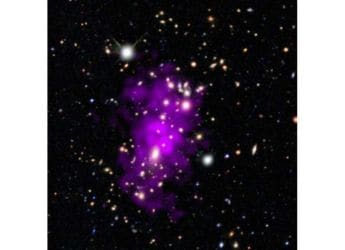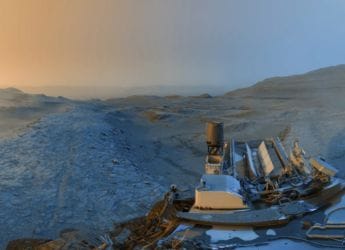- Home
- Science
- Science News
- NASA’s Hubble Space Telescope Tracks a Neutron Star With Mysterious Origin
NASA’s Hubble Space Telescope Tracks a Neutron Star With Mysterious Origin
NASA’s Hubble Space Telescope observed a roaming magnetar of a different origin, indicating the possibility of understanding fast radio bursts.

Photo Credit: ESA
Rogue magnetar SGR 0501+4516, first seen in 2008, was spotted by Hubble
NASA's Hubble Space Telescope spotted a rogue magnetar, dubbed SGR 0501+4516, traversing our galaxy for a significantly long time. As per claims by scientists, it was first discovered in the year 2008 by NASA's Swift Observatory as intense flashes of gamma rays in the outer area of the Milky Way. The lingering magnetar strongly indicates that not all the magnetars in the Milky Way Galaxy have originated from supernovae, claimed the researchers. The unusual nature of this magnetar could provide critical insights into the events of fast radio bursts.
Discovery of Magnetar
Magnetars are purely made of neutrons, the dead remains of stars. Their strong magnetic field makes them unique. Ashley Chrimes, lead author of the study in Astrophysics published on April 15, said that a magnetar has more than a trillion times higher magnetic field than Earth's.
This magnetic influence is so strong that it can even wipe out credit cards if it were to come as close as the halfway point between the Moon and the Earth. If a human reaches even 600 miles near a magnetar, it can rip apart the atoms of their body, too. It was initially presumed to have originated from the remnants of supernovae called HB9, which was spotted nearby its original location. However, the strange nature of magnetar was identified using Hubble's sensitive instruments, together with Gaia spacecraft from ESA raised questions about its origins.
Tracking the Magnetar's Movement
Long-term observations with the help of Hubble led to the measurement of subtle magnetic currents across the sky. Its movement indicated it had not originated from the remnants of a supernova, thus suggesting it had a different origin. With the continuous tracking of its trajectory for almost a thousand years in the past, scientists found that there are no other supernova remnants or star clusters connected to this wandering Magnetar.
Comprehending Fast Radio Bursts
This magnetar is the best entity formed by the accretion-induced collapse, NASA explained. This discovery could be of significance in explaining the fast radio bursts originating from the stellar populations, which are very ancient. The research team has further planned Hubble observations to study the origin of Magnetars, comprehending how these extreme magnetic objects originate.
Catch the latest from the Consumer Electronics Show on Gadgets 360, at our CES 2026 hub.
Related Stories
- Samsung Galaxy Unpacked 2025
- ChatGPT
- Redmi Note 14 Pro+
- iPhone 16
- Apple Vision Pro
- Oneplus 12
- OnePlus Nord CE 3 Lite 5G
- iPhone 13
- Xiaomi 14 Pro
- Oppo Find N3
- Tecno Spark Go (2023)
- Realme V30
- Best Phones Under 25000
- Samsung Galaxy S24 Series
- Cryptocurrency
- iQoo 12
- Samsung Galaxy S24 Ultra
- Giottus
- Samsung Galaxy Z Flip 5
- Apple 'Scary Fast'
- Housefull 5
- GoPro Hero 12 Black Review
- Invincible Season 2
- JioGlass
- HD Ready TV
- Laptop Under 50000
- Smartwatch Under 10000
- Latest Mobile Phones
- Compare Phones
- OPPO Reno 15 Pro Max
- Honor Win RT
- Honor Win
- Xiaomi 17 Ultra Leica Edition
- Xiaomi 17 Ultra
- Huawei Nova 15
- Huawei Nova 15 Pro
- Huawei Nova 15 Ultra
- Asus ProArt P16
- MacBook Pro 14-inch (M5, 2025)
- OPPO Pad Air 5
- Huawei MatePad 11.5 (2026)
- Xiaomi Watch 5
- Huawei Watch 10th Anniversary Edition
- Acerpure Nitro Z Series 100-inch QLED TV
- Samsung 43 Inch LED Ultra HD (4K) Smart TV (UA43UE81AFULXL)
- Asus ROG Ally
- Nintendo Switch Lite
- Haier 1.6 Ton 5 Star Inverter Split AC (HSU19G-MZAID5BN-INV)
- Haier 1.6 Ton 5 Star Inverter Split AC (HSU19G-MZAIM5BN-INV)

















